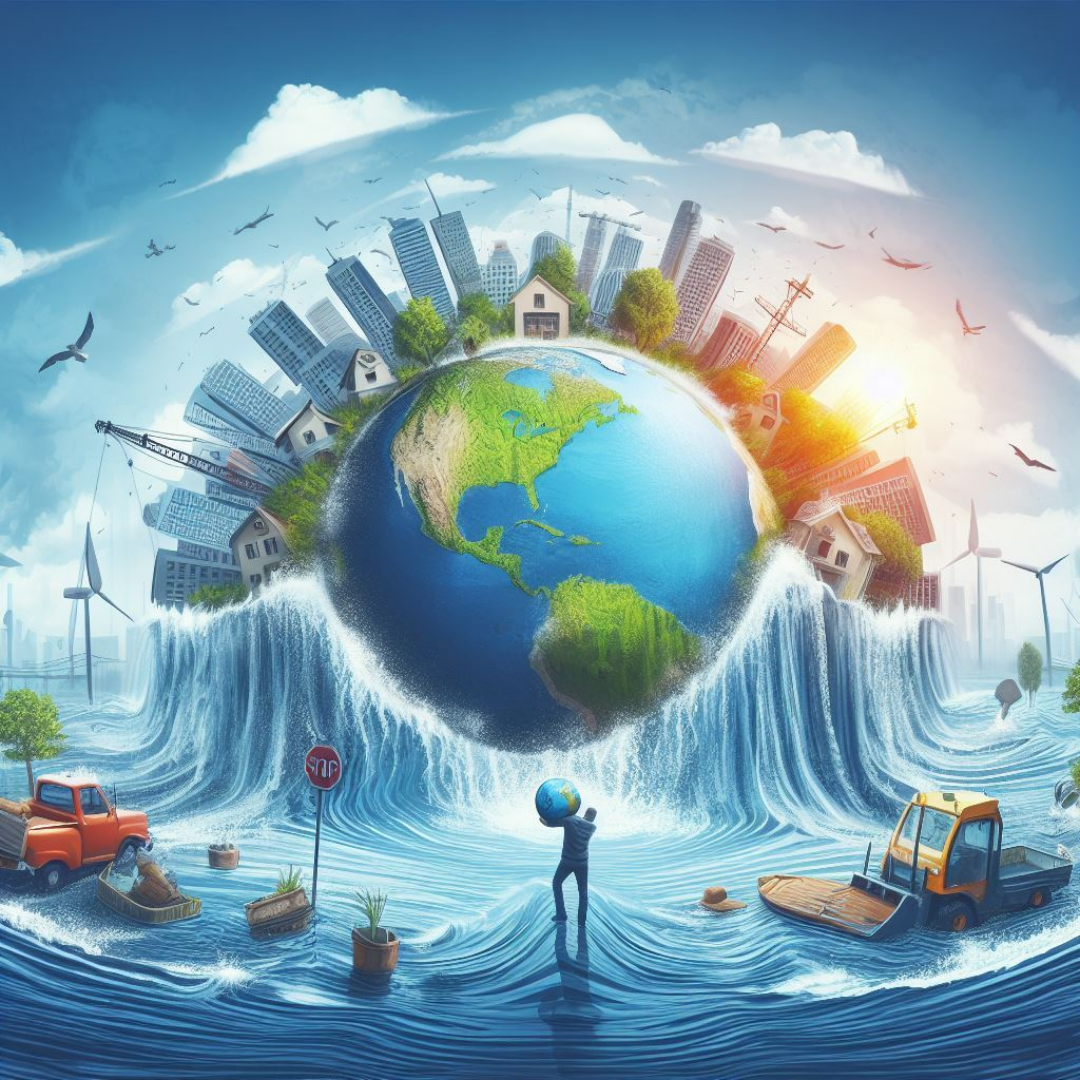“Climate change is no longer some far-off problem; it is happening here; it is happening now,” said Barack Obama.

There is no reason to deny the fact that in Pakistan, a country in the South Asian region, the climate crisis is at its peak. Although Pakistan produces less than 1% of the world’s carbon footprint, it is the 5th most affected country by climate change.
During the past few decades, we have encountered visible consequences of changing climates, i.e., flash floods, erratic weather patterns, glacier melting, landslides, heat waves, droughts, and many more in Pakistan.
One of the recent climate crisis events that Pakistan has faced is the devastating flash floods of 2022. Although this country has a wide history of occurring floods, the 2022 floods have aroused a new debate on the climate change subject, and we are left with no doubt but to accept that our climate is changing.
According to the Federal Flood Commission, Pakistan has witnessed 28 super riverine floods in its 75-year history. The first recorded super flood was witnessed in 1950, and then every year since 2010, which was pronounced the worst flood country has ever faced in its history.
There is no doubt that the floods occurring in the past were of different intensities and had caused significant damage to the livelihoods, infrastructure, and economy of the Pakistan; however, we hardly find any claim that these natural hazards were attributed to climate change crisis and were considered a result of the heavy monsoon rainfall in the summer season.
In contrast to it, an extremely close linkage has been observed between the changing climate and the 2022 flash floods, which means it was purely an extreme climatic event.
Talking about the savage floods of 2022, the country had never seen anything like that before, as one-third of the country was underwater, more than 33 million people were affected, and approximately 8 million people were displaced from their homes.
From June 14 to October 20, 2022, 1,739 people lost their lives, and floods caused ₨ 3.2 trillion ($14.9 billion) of damage and ₨ 3.3 trillion ($15.2 billion) of economic losses. Studies have shown that the causes of flash flooding were unusual monsoon rainfalls and glacier melting followed by a heatwave. Some other contributing factors are deforestation on riverine floodplains, unregulated construction in flood zones, poor drainage systems, and ineffective government policies.
According to climate minister Sherry Rehman, Sindh has received “784%” more rainfall this month than the August average, while the province of Balochistan has received nearly 500% more. According to her, it was a totally climate-induced humanitarian disaster in epic proportions.
The outcomes of this disaster were so severe that even after the passage of six months, there was no appreciable improvement in the country’s situation.
The United Nations Office for the Coordination of Humanitarian Affairs (UNOCHA) says that six months after the Government of Pakistan declared a national emergency, approximately 1.8 million people were still living near contaminated and stagnant floodwater in March 2023.
This dramatic event shook the very foundations of Pakistan, which was already struggling due to the weak economy.
The consequences of these events include the loss of lives and means of subsistence for people, particularly in the underprivileged and discriminated areas of the country; internal displacement of people; food and water insecurity; lack of access to quality drinking water; loss of productivity and efficiency in water-dependent sectors, i.e., energy and agriculture; siltation of dams; gender-based inequalities; and poverty.
Pakistan’s Post-Disaster Needs Assessment estimates suggest that the floods may have led as many as 9.1 million people—or four percentage points—into poverty.
The question that now arises is: given our longer history of catastrophic floods, why did we experience an even more severe event this time around? Why is our government falling behind in developing effective plans and policies for managing natural disasters? And were the funds provided for financial assistance to the flood victims spent as such?
In conclusion, we can state that natural disasters are now a result of the rapidly changing climate rather than a natural phenomenon.
As such, the government needs to acknowledge the growing risk of future climatic events in the country and develop policies that support climate resilient development, implement climate mitigation and adaptation action plans, build capacity in climate change-related institutions, educate and involve local communities, especially women, in decision-making processes, strengthen adaptive capacity, and give priority to areas that are vulnerable to flooding and other natural disasters.
This article is jointly authored by Tayyaba Ashraf and Ms. Shehnaz Zakia.